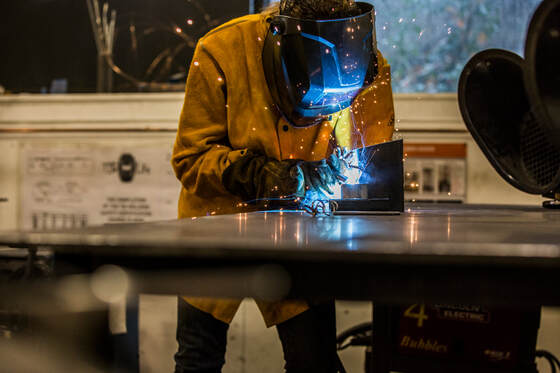Biography
Stephanie Garon received dual science degrees from Cornell University, then attended Maryland Institute College of Art (MICA). Her environmental art has been exhibited internationally in England, Colombia, South Korea, as well as across the United States. Her writing, a critical aspect of her artistic process, has been published in international literary journals. Her poetry book, Acreage, was published by Akinoga Press in December 2021. She is a Trawick Art Prize winner, an Aspen Institute/Social Art & Justice Fellow, Hamiltonian Gallery fellow, a National Park Service Artist-in-Residence in the Everglades, and recipient of grants including The Foundation for Contemporary Art, The Puffin Foundation Environmental Art, The Lucid Foundation, and Maryland State Arts Council.
Artist Statement
My artwork investigates humanity's interruption of nature. Power. Natural objects positioned against industrial materials expose dichotomies of formality/fragility and permanence/impermanence. As natural elements are sourced by hand for site specific connections, artworks convey themes of claim, women’s labor, and time.
As ecologically motivated interventions, forms emphasize the vulnerability of nature. These abstracted expressions visualize an uneasy truce. A contemporary twist on the Arte Povera movement, my work addresses climate crisis politics and mediates attention to the materials themselves. Extensive research, including scientific and cultural investigation, are integrated into each artwork.
Whether the viewer witnesses the changing installation or navigates their movement around these sculptures, the contemplative space provokes individual ecological consciousness for how we, as people, interrupt the natural world around us.
Stephanie Garon received dual science degrees from Cornell University, then attended Maryland Institute College of Art (MICA). Her environmental art has been exhibited internationally in England, Colombia, South Korea, as well as across the United States. Her writing, a critical aspect of her artistic process, has been published in international literary journals. Her poetry book, Acreage, was published by Akinoga Press in December 2021. She is a Trawick Art Prize winner, an Aspen Institute/Social Art & Justice Fellow, Hamiltonian Gallery fellow, a National Park Service Artist-in-Residence in the Everglades, and recipient of grants including The Foundation for Contemporary Art, The Puffin Foundation Environmental Art, The Lucid Foundation, and Maryland State Arts Council.
Artist Statement
My artwork investigates humanity's interruption of nature. Power. Natural objects positioned against industrial materials expose dichotomies of formality/fragility and permanence/impermanence. As natural elements are sourced by hand for site specific connections, artworks convey themes of claim, women’s labor, and time.
As ecologically motivated interventions, forms emphasize the vulnerability of nature. These abstracted expressions visualize an uneasy truce. A contemporary twist on the Arte Povera movement, my work addresses climate crisis politics and mediates attention to the materials themselves. Extensive research, including scientific and cultural investigation, are integrated into each artwork.
Whether the viewer witnesses the changing installation or navigates their movement around these sculptures, the contemplative space provokes individual ecological consciousness for how we, as people, interrupt the natural world around us.
